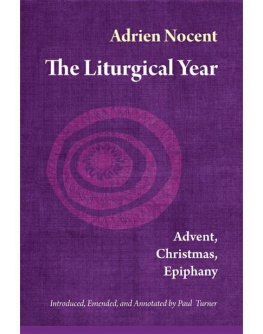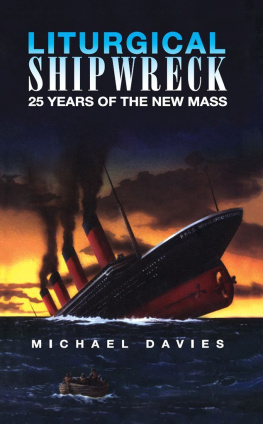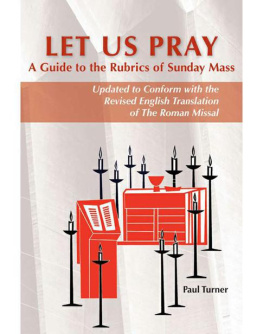LiturgicalQuestion Box
Answers to Common Questions about theModern Liturgy
PETERJ. ELLIOTT

IGNATIUS PRESSSAN FRANCISCO
Nihil Obstat : ReverendG. Diamond, M.A. (Oxon), L.S.S., D. Theol., Diocesan Censor
Imprimatur: MostReverend Denis J. Hart, D.D., V.G., Auxiliary Bishop
December 22, 1997
The Nihil Obstat and Imprimatur areofficial declarations that a book or pamphlet is free of doctrinal or moralerror. No implication is contained therein that those who have granted the Nihil Obstat and Imprimatur agreewith the contents, opinions or statements expressed. They do not necessarilysignify that the work is approved as a basic text for catechetical instruction.
Cover by Riz Boncan Marsella
1998 IgnatiusPress, San Francisco
All rights reserved
ISBN 0-89870-677-7
Library ofCongress catalogue number 97-76854
Printed in theUnited States of America
CONTENTS
PREFACE
Most of thequestions included in this book were first raised in the "LiturgicalQuestion Box", which has appeared in recent years in Christ to the World, an International Review ofDocumentation and Apostolic Experiences. I thank the editors of Christ to the World, in particular the Rev. Fr. Alphonse Sutton, F.I., for welcoming the publicationof these questions and answers in book form. The questions and replies given in Christ to the World have been expanded, adapted and supplemented with new material. Some questionsare obviously from clergy and touch on pastoral questions, while others reflectthe queries and concerns of the laity. For easy reference, authorities arecited in the text, without abbreviations, and there are no footnotes.
Thereplies to the questions often reflect and develop various areas I have alreadycovered in Ceremonies ofthe Modern Roman Rite (San Francisco: Ignatius Press, 1995),published in Spanish as Guia pratica de liturgia (S.A. Pamplona: Ediciones Universidad de Navarra, 1996). However, this more popular question-and-answervolume provides the opportunity to explain in greater detail and in a morerelaxed style themes contained in that manual. Moreover, the scope of this bookhas been widened to include sacramental questions and various pastoral problemsrelated directly to the celebration of the liturgy and sacraments. Liturgical Question Box thus anticipates the sequel that is being prepared to accompany Ceremonies of the Modern RomanRite, that is, a ceremonial guide to the sacraments, funerals andthe rites of the Church Year.
Ithank the Most Rev. Denis J. Hart, Auxiliary Bishop of the Archdiocese ofMelbourne, for his expert advice and incisive comment on technical points. Mygratitude is also due to the Rev. Msgr. Alan McCormack, Rev. Kieran Adams, O.R,Rev. Geoffrey H. Jarret , Rev. Peter Joseph, Rev.Michael Miller, C.S.B., Rev. Paul Stuart, Rev. William R. Young and Mrs.Christine McCarthy for their suggestions and advice: They are not necessarilycommitted to all the opinions offered in this work.
Theeditorial staff of Ignatius Press have not only shown me cooperation with theirmany useful suggestions but once again demonstrated that their work ismotivated by a deep love for Our Lord Jesus Christ and His beloved Bride the Church.
Rev. Msgr. Peter J. Elliott
INTRODUCTION
Someone lookingin on the Church from the outside must be puzzled, even perplexed, hearingCatholics discuss liturgical questions. A world where men and women, evenchildren, ponder over genuflections, incensations ,ambos and acolytes may seem irrelevant to "real life" at thebeginning of the third millennium. Of course this is not so, once one realizesthat all liturgical matters are part of the color and texture of a most marvellous tapestry, a richer and greater whole. This isthe Divine Liturgy itself, that hymn of endless prayer, praise and adorationrising daily from the members of a global community, the People who are unitedwith the Man who is God and the God who became Man, Jesus Christ the Lord.
Therefore,dealing as it must with "all things great and small", this kind ofbook is meant to be read primarily within the family circle of the Church. Soanyone who is not curious about the details of Catholic worship should put Liturgical Question Box aside. This book will make as much sense to such a reader as a study of thefiner points of bridge would make to someone seeking a treatise on humanrights. Of course it would be unjust to imply that people who play bridgecannot be concerned about human rights, but that applies equally to those of uswho discuss liturgical questions.
Theworship of the Catholic Church is no secret matter. It is a public activitythat involves millions of people daily, and, in particular, on every Sunday, inall the nations of the world. Liturgical worship and sacramental life areclosely related to the struggle for justice and human rights that today findsits greatest and most consistent champions in the Catholic Church. The rightorder and balance of Christian worship flow from the Heart of Jesus Christ intoour daily lives, because both Christian worship and Christian living areinformed by His enduring truths of charity, peace, justice and solidarity.
LiturgicalLaw?
Catholic worshipis meant to be well ordered. Therefore, LiturgicalQuestion Box assumes that liturgical law exists and that it isbinding. But the purpose of this law is to encourage and promote the spiritualwell-being, participation and unity of Christ's faithful. It also exists forthe sanctification and protection of the clergy, who celebrate the rites of theChurch at the very heart of their ministry to others. It is thus a law ofservice, not servitude. It is a law that flourishes only within the freedom ofgrace, because it facilitates the supreme ministry of grace, imparted in thesacraments. Outside the domain of grace, it soon degenerates into formalism andleads to ritualism. But like all sound law, it exists both for the good of theindividual person and for the common good of persons. Duly ordered liturgicalworship sustains the People of God by maintaining, protecting and promoting thecentral reason for the existence of the Church, the adoration of the triuneGod.
PopeJohn Paul II has explained how liturgical law is concerned with the differentroles people play in worship and that liturgical law points beyond itself. OnMarch 8, 1997, speaking to the French bishops of Provence and theMediterranean, he said:
The liturgy,which expresses the Church's proper nature and is a source for the mission, isgiven to us by the Church to glorify God: thus its laws, which should be respected by distinguishing the different roles carried out by the ordained ministers and by lay people. Whatever directsbelievers to God, what gathers them and what unites them with one another andwith all the other assemblies should be given priority. The Council was clear on this matter: "Pastors of souls must, therefore,realize that when the liturgy is celebrated, something more is required thanthe laws governing valid and lawful celebration. It is their duty also toensure that the faithful take part fully aware of what they are doing, activelyengaged in the rite and enriched by it" ( Sacrosanctum Concilium ,no. n).
Whilethere are more options and a more flexible pastoral approach is evident today,this is no excuse for a cavalier attitude toward directives, rubrics andtraditions. The anarchist approach to liturgy has caused great harm among theCatholic people. It cannot provide that "something more" that the CouncilFathers called for, going beyond lawfulness and validity, because it hasscorned the foundational structure of Christian worship. Therefore, while I wasat first surprised to find so many of the laity taking up Ceremonies of the Modern RomanRite as a guide to "what should be done", theirenthusiastic response has taught me a greater sympathy for those faithfulfamilies and individuals who worship God in churches where confusion andmistakes still reign.
Next page




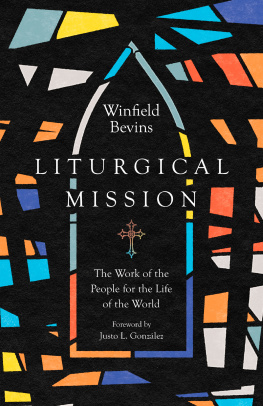
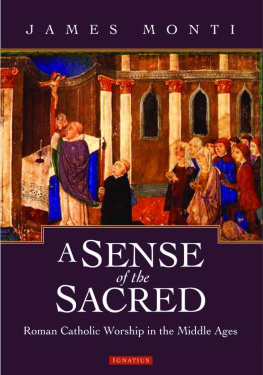
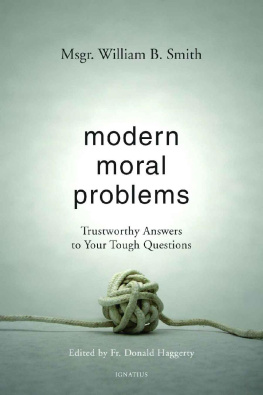
![Pope John XXIII - The Roman Missal [1962]](/uploads/posts/book/272720/thumbs/pope-john-xxiii-the-roman-missal-1962.jpg)
